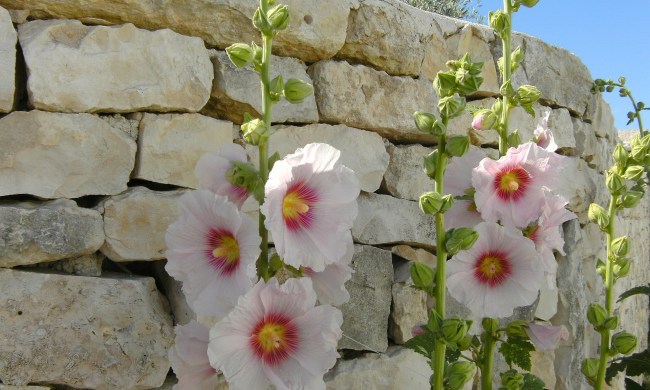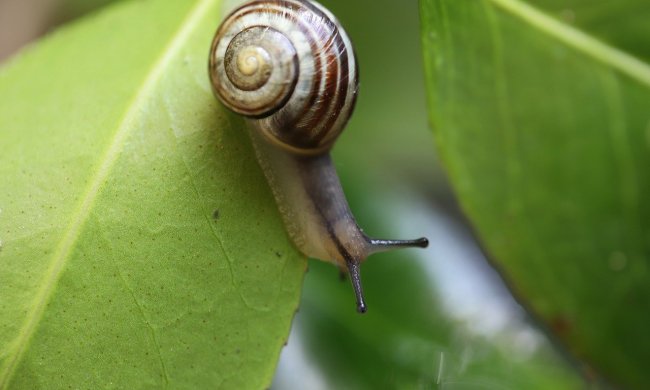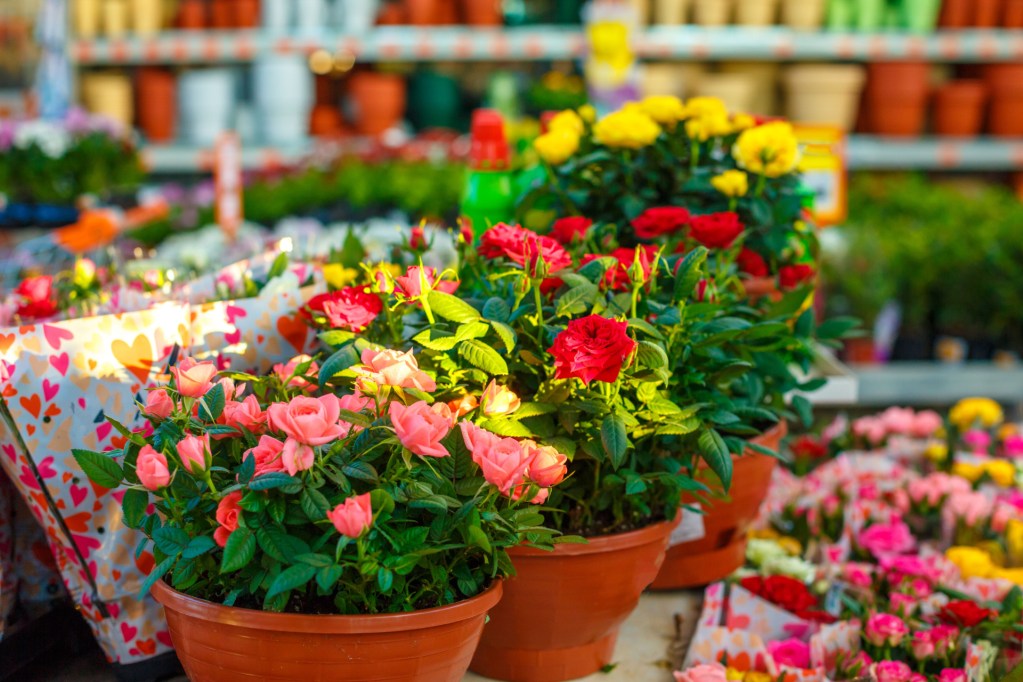
Roses are beautiful, elegant flowers, but they’re also typically grown as outdoor blooms. They can take up a lot of space and have a reputation for being somewhat particular about their care. So what should you do if you have limited space to grow plants, or if the weather isn’t compatible with growing roses? Grow them indoors, of course! Here’s everything you need to know to care for an indoor rose plant.
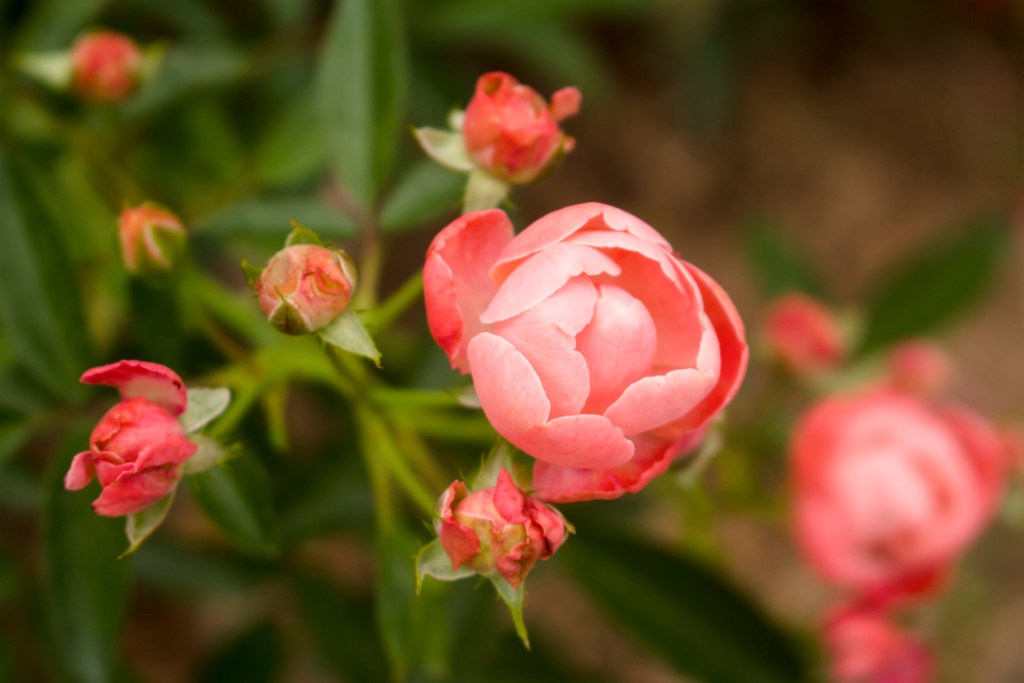
Can you grow roses inside?
Yes, you absolutely can! Revitalize your indoor garden with a bounty of roses. Roses will grow just as well indoors as they would outdoors, as long as you take proper care of them. Here are the basics of rose care and how they’re impacted by the change of scenery.
Light
Light is very important for roses. Most rose varieties need roughly six hours of direct sunlight a day. For indoor roses, make sure they have plenty of light or look for a variety that specifically grows in lower light. Grow lights will be crucial if your home doesn’t get a lot of natural lighting.
Water
When watering your roses, make sure that the top inch of the soil is dry before you water, but don’t let the soil dry out completely. You also want to keep an eye out for the humidity. If the air isn’t humid enough, your rose may develop a spider mite infestation! You can place your rose in a tray with just a little water in it, which creates more humidity around the plant as the water evaporates. There is, of course, also the option of investing in a humidifier.
Temperature
Roses are not very fond of the cold. They need temperatures ranging from 60 to 75 degrees Fahrenheit to be comfortable. However, you can start your roses in January or February — the seeds should be just fine with this timing. The soil will keep them warm in late winter, and you should see sprouts by spring.
Pruning
Roses do need to be pruned, and this is especially true of indoor roses. Pruning keeps them healthy and from taking up too much room. Simply clip faded blooms off with sharp garden shears or a blade.
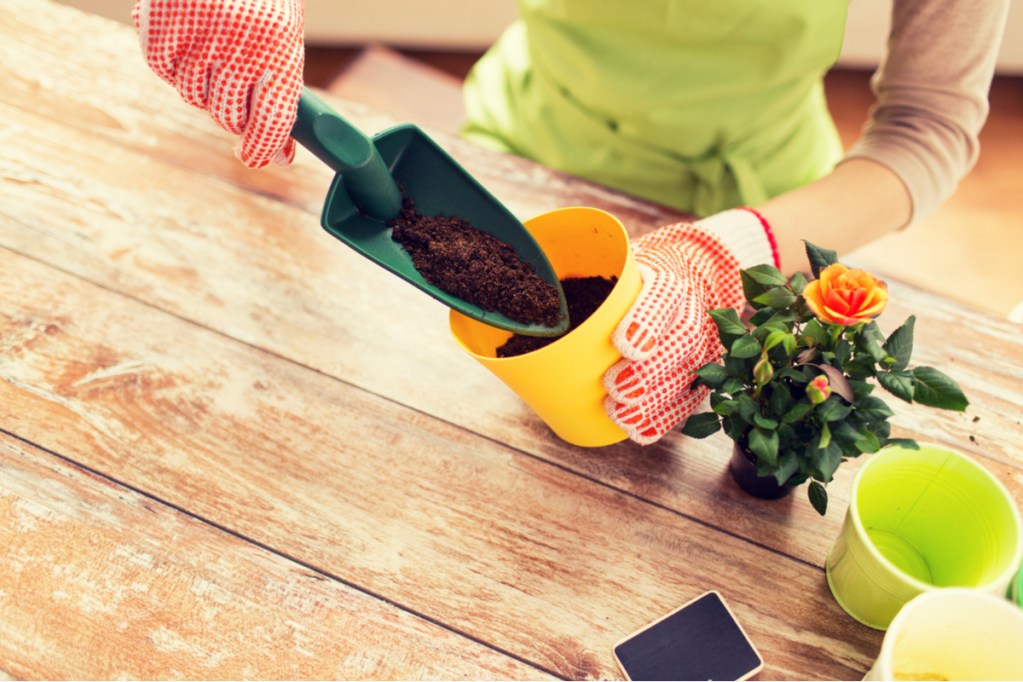
What are some common indoor rose problems?
Indoor roses are generally lower maintenance than outdoor ones, but they aren’t indestructible. As you care for your indoor rose, here are a few problems that you may need to troubleshoot from time to time.
- Lack of light: Roses that don’t get enough light will struggle to bloom, and they may also face a bevy of other problems, including wilting and falling leaves. It’s best if you can leave your rose plant by a south- or west-facing window. If you don’t have access to good lighting, invest in grow lights.
- Underwatering: If you’re more adept to growing houseplants, you may inadvertently underwater your indoor rose plant. Signs of underwatering include wilting leaves and buds, along with a plant that seems smaller than usual. Some people water their roses as much as once a day, but do check in with your soil at least once a week.
- Pests: Because there isn’t as much air circulation in the home, your indoor plants may have moister soil and be more attractive to pests such as mealybugs. Every so often, check your leaves and soil for signs of infestations. You can often treat pests by washing them off and using insecticidal soap.
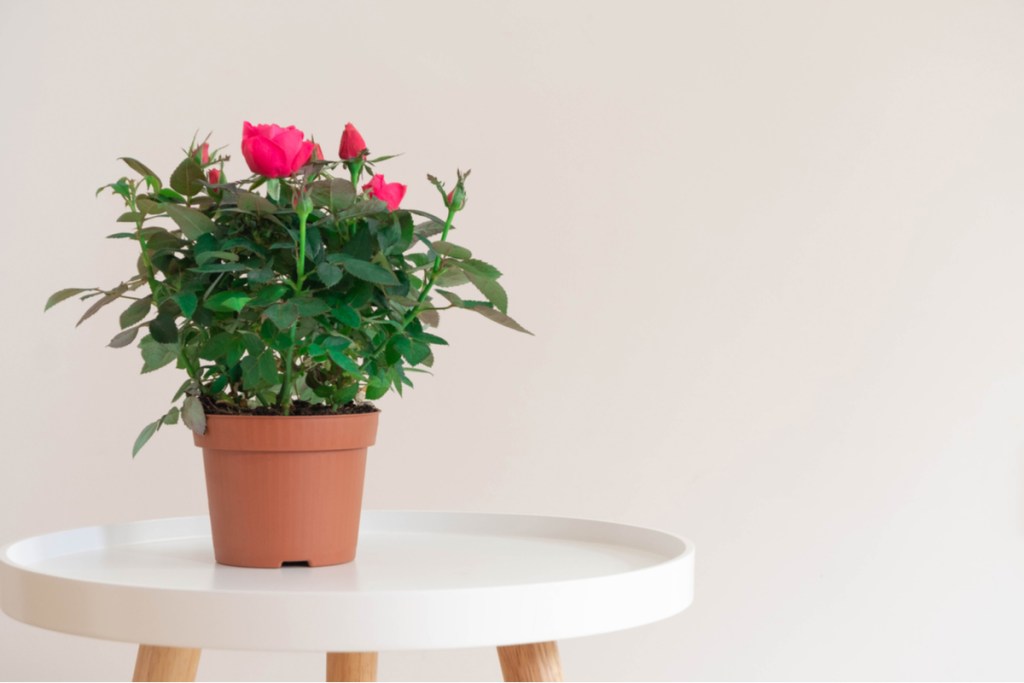
What varieties of roses grow well inside?
The most popular rose variety for indoor gardens is the miniature rose! As the name suggests, mini roses are smaller plants, making them easier and more convenient for indoor spaces with less room.
If you have some vertical space, but not as much floor space, try growing climbing roses. These need a trellis or grid of some sort to hold onto and climb, but they are otherwise no more difficult to care for than any other rose. Of course, any rose variety can be grown indoors if you have the space and time to devote to them! If you need a variety that does well in partial shade, consider Sophy’s rose, golden unicorn rose, and French lace rose.

How much space does it take to grow roses inside?
The amount of space you need depends on how many roses you have and what variety they are. Full-size rose bushes will, naturally, take up much more room than miniature roses, and one rose plant needs less room than several.
Miniature roses can grow to be between 1 and 4 feet tall, while most regular roses grow to be 6 to 8 feet tall. However, you can keep them smaller through regular and careful pruning. Climbing roses will grow as tall as you let them. In general, make sure that you have a few feet for each rose plant. When they’re young, roses take up less space and can be grouped closer together, with adjustments as they grow.
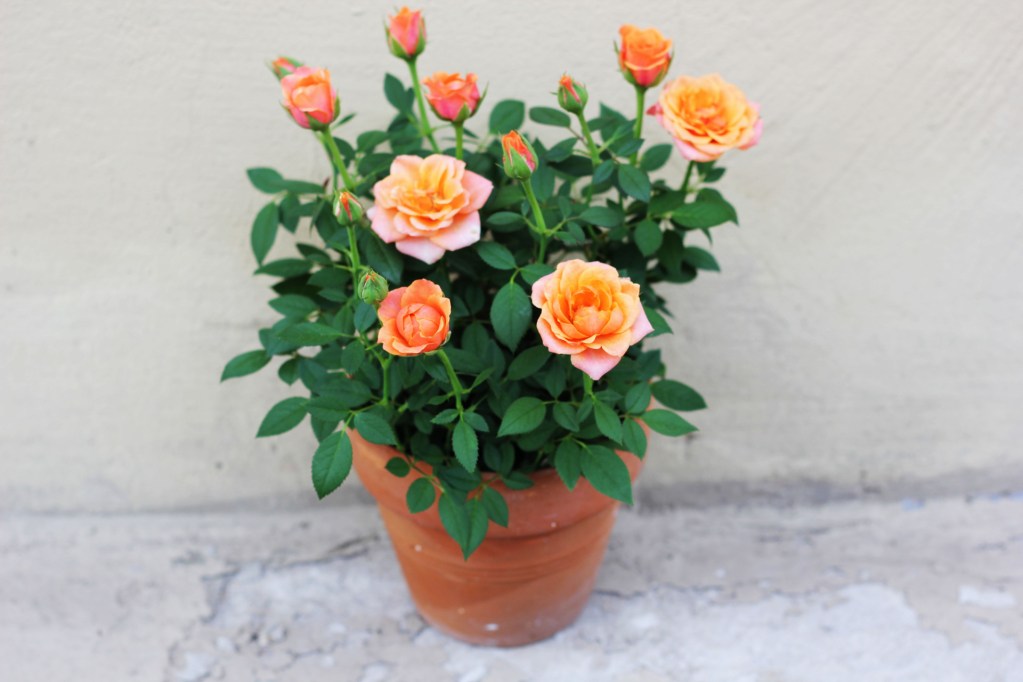
Can you move indoor roses outside?
You can move your roses outdoors as long as the weather is suitably warm. In spring and summer, your roses may even appreciate being outdoors! There are a few things to consider, though.
You want to make sure that you move them outside a little at a time — this is known as the hardening-off process. Sudden changes in a plant’s environment can shock it, leading to health problems. Start putting your rose plant outside for small increments of time and gradually work your way up, until it’s mostly living outside.
Something else to consider is what pot your plant is in. While different materials offer different benefits, the most important thing to take into account is size. During a rose’s early life, you’ll see a more dramatic increase in size, so they need to be repotted more often. After moving your plant outside for some time, check to see if it needs to be repotted. When your roses are mostly grown, they only need to be repotted every year or two as they grow. The pots need to be just bigger than the root ball. This gives the roots room to grow, but it doesn’t leave too much empty space for extra water to pool.
There are a lot of ways to make your garden your own, so don’t be afraid to experiment with different varieties and arrangements. Who knows — you might have a prolific indoor rose garden before you know it.


